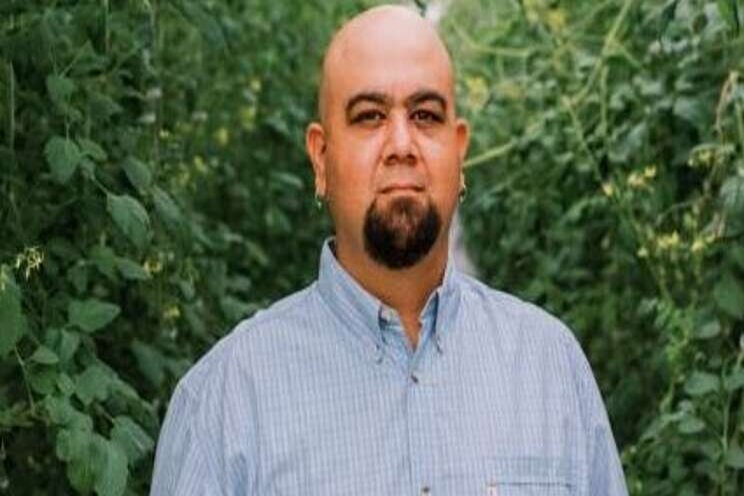The man behind the plants
Added on 17 May 2021

Greenhouse Grower caught up with Dr. Saha to learn more about his career path, and his involvement in making critical decisions at KFH on best production practices, variety selection, and more.
Q: How did your experience in Extension help shape your role at Kentucky Fresh Harvest?
Shubin Saha: As I got into horticulture while pursuing my degree at the University of Kentucky, I became especially interested in greenhouses largely because of how they can help increase productivity and provide food year-round. Plants are my passion, and I wanted to pursue a path that let me work with plants directly. After I got my degree, it was my dream to eventually run my own greenhouse business, specifically for vegetables, because I figured that people always need to eat.
I then had the opportunity to be one of the first group of students in the Doctor of Plant Medicine program at the University of Florida, which was an applied doctorate involving interdisciplinary study in entomology, plant pathology, soil science, and basically anything and everything under the sun that would affect crop growth. It's a holistic, systems approach to horticulture that protected environments like ours are made for.
I spent my first five post-doctorate years as a professor at Purdue University before finding an opportunity to come home and take on the soon-to-be-open role of vegetable specialist at the University of Kentucky. At UK, I had a chance to work closely with small-scale farmers, which was great because I genuinely enjoy helping people solve problems and I wanted to do research that was meaningful for growers of all sizes.
During that time as an Extension professor, I was called on to work with the Whitley County Extension agent, who was having early conversations with a group in the site-selection phase for a new greenhouse business in Kentucky. I helped advise them for a few months, and when they realized they needed someone on the team with local growing expertise, it gave me the chance to start fulfilling my dream.
Q: How are you involved in the decision-making process at KFH?
Saha: Everything we do here serves the plants and it's our responsibility to give them exactly what they need in order to be healthy and productive. From genetics to IPM, this team we've pulled together in Stanford is in constant dialogue with the plants and mother nature.
When I first started, I helped with preliminary horticulture decisions, including meeting with seed companies to choose varieties that offered strong plant disease resistance packages. I was also able to use my interest in engineering and construction to come up with designs for everything from natural gas to irrigation to nutrient solution recirculation. It was great because while my title is COO, I prefer to be out in the field, working with a team to troubleshoot problems as they come up and build a system designed for Kentucky's unique climate and IPM challenges.
Most recently, I've been involved in setting up variety trials with the hope of having a dedicated R&D area of the facility. We've been looking hard at finding the right varieties that work for the grower, the retailer, and the consumer.
Q: How has your involvement in Kentucky's Ag Tech Initiative helped shape KFH?
Saha: We've got a real opportunity here: Kentucky is extremely well-positioned to be a powerhouse in the produce world. We want everyone in the state who tries their hand at greenhouse production to do well, big or small, because there really is strength in numbers. The bigger the industry gets from the production side, the better chance we have of attracting some of those support industries that are crucial to the mission.
While greenhouses are only a part of the overall program, the vision that all participants bring to the table can manifest in a number of different ways. I think we're headed in a good direction, and it's helped us to connect with other people in the state and hopefully collaborate on future projects.
Just as we've seen in other greenhouse-heavy areas around the world, like Leamington or the Netherlands, that kind of public-private collaboration can really make an impact on policy and help to cultivate a hospitable, pre-competitive environment where everyone can thrive. It's that real world, boots-on-the-ground mentality I'm bringing to the discussion.
Q: Is there anything new you're working on right now?
Saha: We're looking at a new data collection software that could help us in food safety and tracking employees, and making better educated decisions, while learning more about the areas where we need to improve. It's all about making better data-driven decisions and a culture of continuous improvement. Ultimately, the greenhouse is just a tool, but when paired with a great team, that tool can be used to do amazing things. So, beyond expanding our existing production area and making improvements to existing systems, we're making a serious effort to build a culture of shared responsibility and mutual respect at every level of the organization.
And of course our biggest focus is tending to our first commercial crop, which will be ready for harvest this summer. At full-scale, production is year-round, and those efforts to build a better business model from the beginning are going to pay dividends for the plants, the people, and the company for years to come.
Click here for more information.
Source and Photo Courtesy of Greenhouse Grower
Source: Greenhouse Grower
More news















